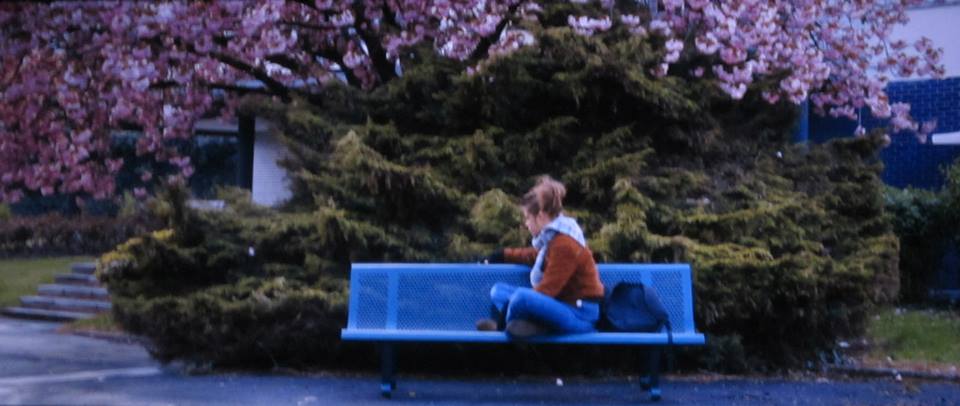The very first thing I noticed about BLUE IS THE WARMEST COLOR was that blue was the commonest color in shot, after shot, after shot. Articles of clothing, pieces of furniture, spots of paint on the wall, things on the street, park benches, blue in the background, blue in the foreground, blue somewhere in the frame. It was easy to observe this, at the expense of a pure experience of the film, as it was already well-known, if one was remotely a film person, what it was about, and that the woman who would be the young protagonist’s lesbian lover would have blue hair, and that, obvious from the title given it for English release, the color had symbolic import.
The effect is quite beautiful, in its way, and heavily pictorial, as might be expected if the director and cinematographer are alluding to the film’s source, a French graphic novel by Julie Maroh called The Life of Adèle (the film, in the French release, has the same title as the book, with the subtitle “Chapters 1 & 2”). I nabbed a copy of the novel, in order to make a comparison, and sure enough blue features prominently in its frames, though less pervasively than in those of the film. (There is some letting up in the film’s use of blue as its emotions vary, but not much.)
Of course, with the literary source in hand, it is also possible to compare the extended “graphic” sex scene, which has been controversial, not because it is lesbian per se, but because it has been said to cater to the male gaze and to inaccurately depict what lesbians do together, although for every objecting woman there seems to be another who protests that she does, indeed, do those things. The author of the graphic novel is among those who have objected, and it is true that in the book the equivalent scene bears no more than a passing resemblance to the screen version. One sees only bits and pieces of the lovemaking in the novel (legs raised in the air or whatnot) rather than a continuous flow of images and full body screen shots.
Aside from noting that not very much heterosexual screen sex is particularly notable for its realism either, and that few notions of what is real or not are as individualized as those regarding sex, there is little I can say about the dispute other than that the whole affair is beautifully filmed, appeals without doubt to the male heterosexual gaze, and is bravely acted by the two women. I will add, however, that it made me wonder just what is meant by “explicit” or “graphic” in our parlance about sex scenes, as glimpses of actual private parts are scrupulously avoided; “whole” or “full body,” as I just wrote, or “long view,” would be a better description; it is in reality a rather tame sequence, especially given the buildup in the media.
The sex is not, in any case, the reason one should see Abdellatif Kechiche’s LA VIE D’ADÈLE – CHAPITRES 1 & 2, to call it by its proper name. The reasons to see it are named Adèle Exarchopoulos and Léa Seydoux, who play, respectively, the adolescent woman whose sexual awakening the film depicts and the somewhat older artist who is the vehicle for it. They are remarkable, and it is not often in the cinema that an emotion is as hard to take as those that arise with the souring of their relationship (which is essentially caused by the fact that becoming an adult secure in one’s identity does not happen overnight). There is anger so spiteful as to appall and hurt so deep as to recall all that each of us have received in our lives, and in the faces of the women are guilt, fury, pain, and – I am searching for words – an extinction of love so rapid as to defy its definition.
The two principals in this film are, to repeat, remarkable, all the more so given that this is Exarchopolous’ debut. See the film for the two of them and most especially for her, and the emotions between them, in glance and in touch, in voice and in silence.
Check listings for viewing options.
